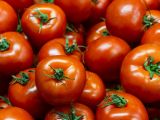Tomato: fruit or vegetable?

Tomatoes are ubiquitous on our tables: in salads, pasta, pizza and canned foods. But there is a dilemma that has divided scientists, chefs and even judges for centuries: is the tomato a fruit or a vegetable? You might think the answer is simple, but the reality is much more surprising. In this article, we look at the case from all angles (botanical, culinary and legal) to finally solve the riddle.
Botanical science speaks for itself...
Botanically speaking, the tomato is undoubtedly a fruit. More precisely, it is a berry produced from a flower and containing seeds. According to botanists, a fruit is the part of the plant that develops from the ovary of the flower after fertilization. Cucumbers, eggplants and zucchini (all considered fruits botanically speaking) also fall into this category. In short, if science speaks, the tomato is a fruit in its own right!
Why do we use tomato as a vegetable?
Although the tomato is a fruit from a botanical point of view, it is universally treated as a vegetable in the kitchen. The reason? It is a cultural and practical matter. In culinary tradition, foods are classified not according to botany, but according to taste and use in dishes: sweet ingredients are associated with fruits, while savory ones are considered vegetables.
Tomatoes, with a delicately acidic flavor and low in sugar, are used almost exclusively in savory recipes: sauces, salads, soups and side dishes. This common use has led to its "culinary adoption" as a vegetable. In cooking, the palate trumps science, and the tomato is the perfect example!
Supreme Court ruling
In 1893, in the United States, a case even reached the Supreme Court to decide whether tomatoes should be taxed as fruits or vegetables. The verdict? Vegetable! The rationale was based on the common use of tomatoes in cooking, not its scientific classification. Since then, at least commercially, the tomato is officially a vegetable. Curious, isn't it?
Conclusion: tomato is a fruit for science and vegetable for the world
Ultimately, the tomato is both a fruit and a vegetable: fruit for botany, as it arises from the ovary of the flower and contains seeds; vegetable for cooking and law, based on its common use in savory dishes. A perfect example of how science, culture and culinary tradition can coexist in a single food. The next time you make a fresh caprese or bite into a tomato bruschetta, remember: you are enjoying a fruit... that the world has decided to call a vegetable.
You might also be interested in:
 Daniele Mainieri
Daniele Mainieri
